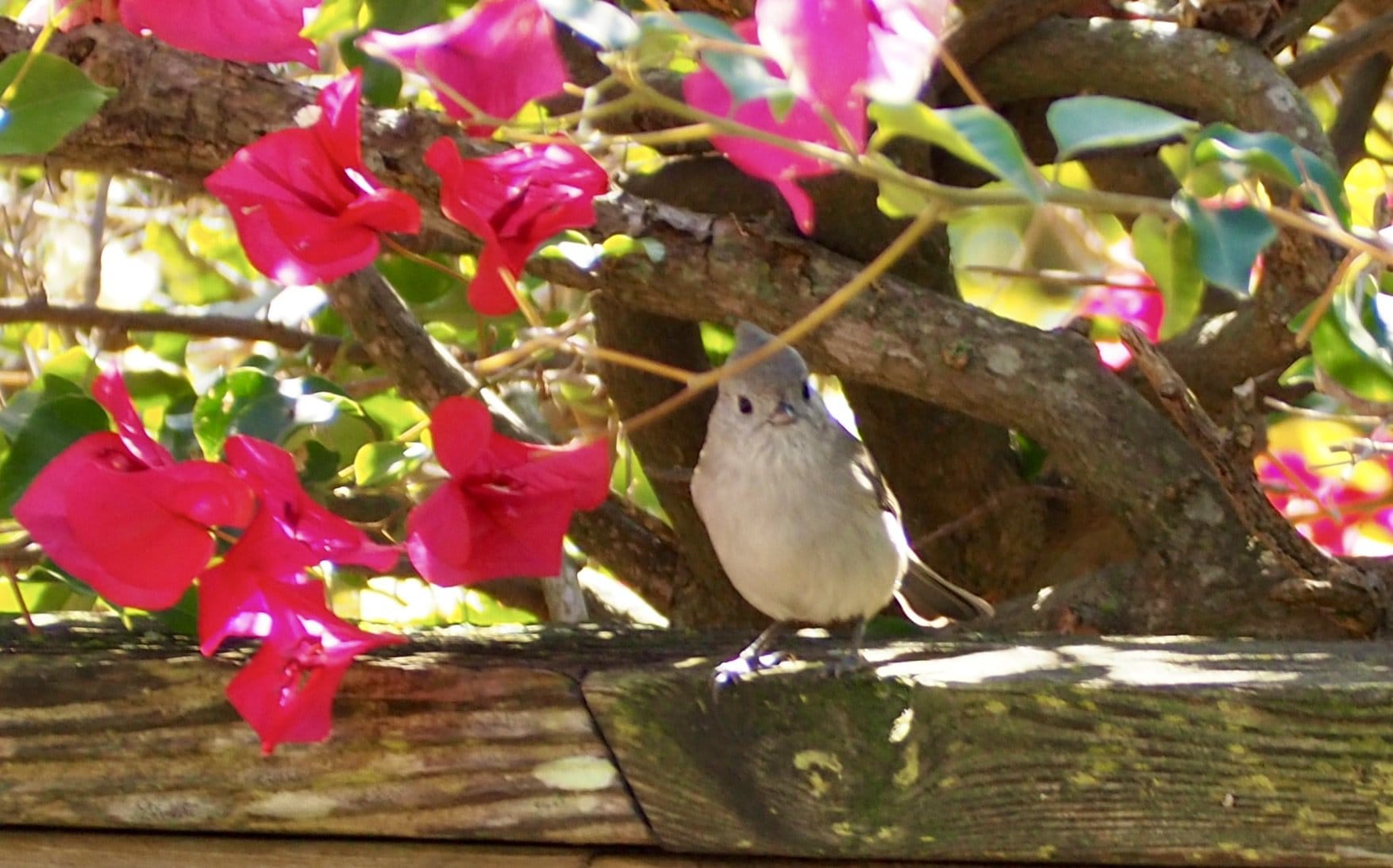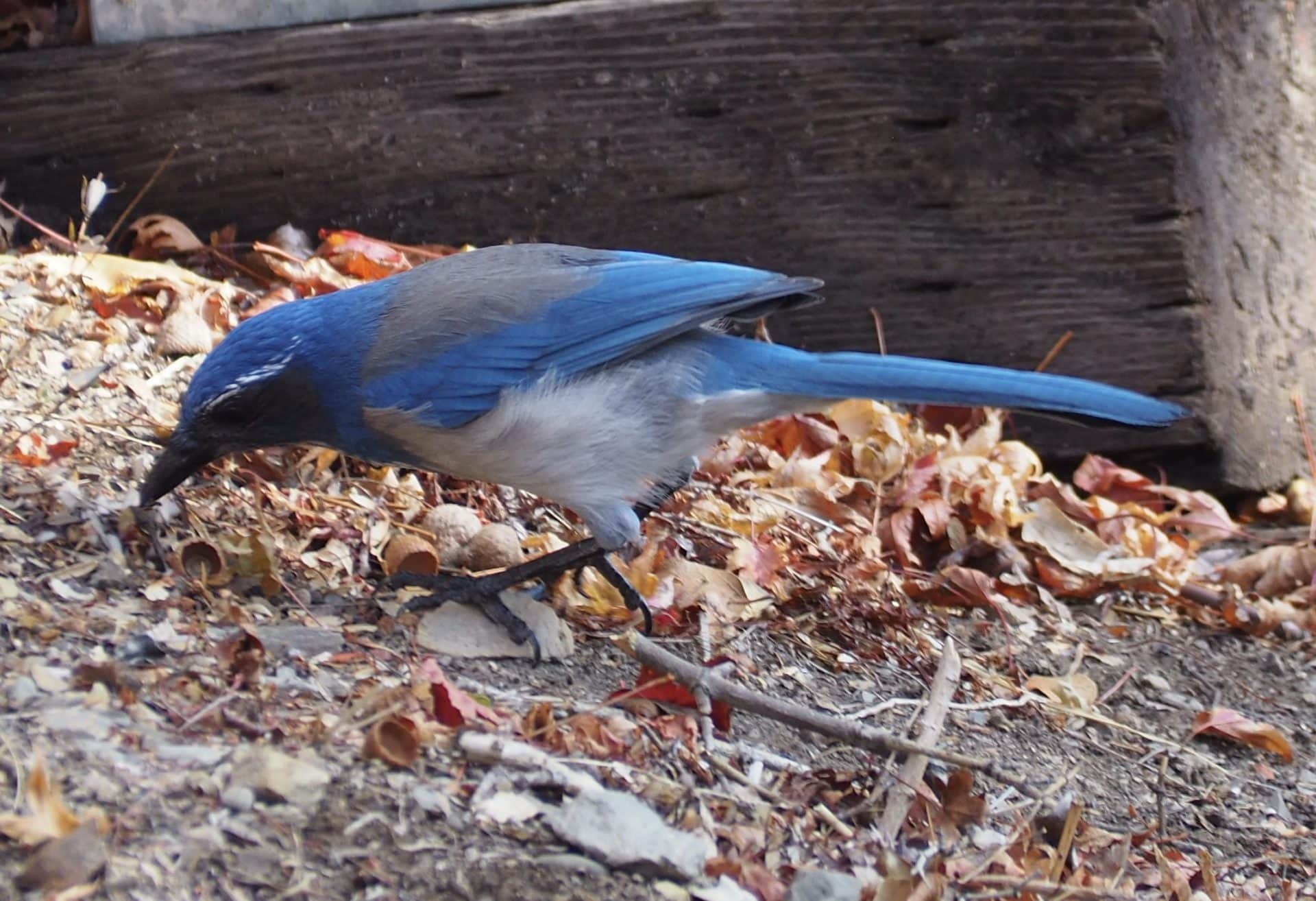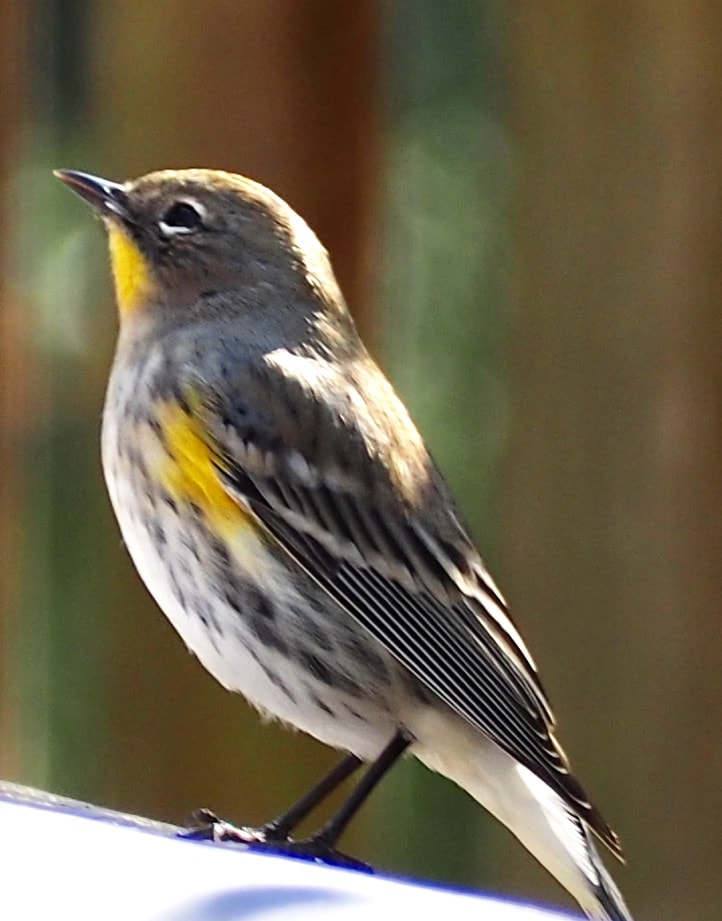Food Fest for Birds
By Leanne Grossman
It’s about 11:45 am on November 14th when I notice thousands of transparent wings lift into the sky. Termite larvae are emerging from the bricks of my backyard patio and becoming alates (their wings develop fairly instantly). In the past, no critters had overtly noticed them, but this year, local birds and migrators are indulging in an endless feast. The female alates are seeking males to mate with and start their own colonies.
A pair of Oak Titmice fly down from the coastal live oak branches overhead.

They are dive-bombing the winged insects and grabbing them like flycatchers do. Five Yellow-rumped Warblers take advantage of the termite swarmers, eating them off the ground and flying to and from perches where the birds can spot the biggest groups of insects.

It’s noontime and the Western Scrub Jay arrives to his resident territory. He’s a bit late to the party and he is too large to have the agility to catch the termites sky-bound. But he hops around the patio and the dirt eating the larvae, and doesn’t scare off the smaller species of birds that arrived first.
At 12:30 pm, the Bewick’s Wren, which I hear fairly frequently, arrived and hopped over to the insects on the brick. After an hour or so, I thought the birds were fully engorged, but they only paused, then resumed their foray. It’s kind of like me and chocolate—there’s just no such thing as too much!

In the past I’ve guiltily tried to water the termites to death on the patio before they could take flight. I did not want to see my home or my neighbors’ homes infested. But now—no more murder! I feel much better leaving them be so the birds can meet their protein requirements.
I am hoping the Anna’s Hummingbirds who nectar at the abutilon tree will partake in the termite feast since their diet requires daily protein as well as nectar. But the hummers don’t appear. It could be that the alate wings, about ½ inch in length, are just too hard to get down their tiny throats even with their forked tongues. With excellent vision, hummers pluck tiny insects out of the air, some of the insects being so small humans can’t even see them.
Often Chestnut-backed Chickadees stop here to nectar, but on this day, although they normally eat insects, they are not interested in this meal.
A bit later, a Red-tailed Hawk flies overhead. None of the feasting birds budge. The “fixin’s” are just too plentiful to go and hide from a predator.
At 12:45 pm, the jay goes back to eating acorns, a far meatier meal. The resident California Towhees also show up late, but don’t modify their eating pattern. They poke around the ground for seeds, nuts and bugs. I can’t discern if they’re also consuming the termites in the dirt or not.
Finally, it’s the warblers who are harvesting the last morsels of termite as the flying colony diminishes. I realized that throughout the predation, not one bird of any species has uttered a call, note, alert or song. I guess because their mouths are full!

I thought this phenomenon occurs only once every year, usually in mid-October, not mid-November, and usually following a rain. But four days go by and another batch of larvae emerge, grow wings and take flight. It does not attract as many birds, this time a few warblers and a titmouse. Queen termites of mature colonies can lay a thousand eggs at a time and perhaps when the colony is that large, they don’t all emerge at once. It’s also possible that I have two or more colonies here. Nonetheless, I remain committed to respecting the laws of nature and not killing the termites off prematurely as I did before. It is generally so easy for us humans to get rid of whatever is in our way, whatever is inconvenient. Even as a naturalist I have to catch myself from indulging in that behavior.
We can no longer claim that our destiny is survival of the fittest. We’ve regrettably shown we have the power and the tools to wipe out entire species of creatures. But are we the smartest? Not so far.
We have destroyed many parts of our own nest, including some 800 animal and plant species over the last four centuries, according to the IUCN. Are we smart enough to pull back, control our greed and respect all living things on Earth? I’m afraid the jury is still out on that one. I trust the Earth itself will eventually recover, but it’s not clear that we will survive with it.
About Leanne: Leanne Grossman is a Bay Area naturalist living on Huchiun territory (Oakland). She was in the midst of an expedition to 100 Redwood parks throughout California when COVID hit. She offers guided hikes, walks and experiences (with PPE), which you can sign up for at www.NatureRhythms.net.
